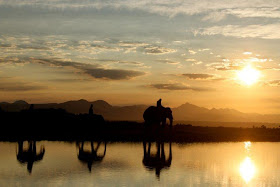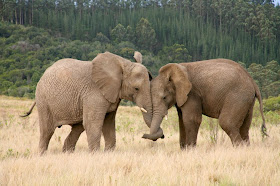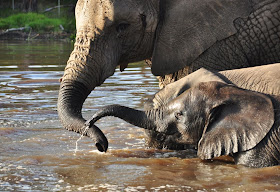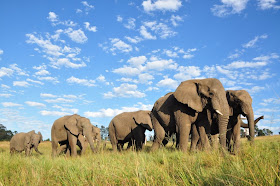The Knysna Elephants
Guest blog by Janet Middleton
 |
| Photos courtesy of Knysna Elephant Park |
 |
| Knysna Elephants |
By 1908, only 20 of
these great giants remained, largely due to poaching, hunting and ivory
smuggling. The Knysna Elephant, also known as the Cape
bush elephant; is the southernmost elephant on the African continent. The forests
surrounding Knysna have a wonderful spirit and peace and the thought of wild
elephants still tramping through the trees is food for the imagination. The
last confirmed sighting of an elephant in the vast forest was in 1990, although
there are many stories of snatched glimpses of the grey mammals and
unmistakeable sounds of movement in the forest. The general consensus is that
there is one or more left in the wild of the forest.
In a remarkable effort to repopulate the area, the
 |
| Knysna Elephants |
 |
| Knysna Elephants |
Note from Liz - In May 2011 there were reports that hikers had spotted two elephants near Jubilee Creek. There are also numerous photos and reports of evidence of the existence of elephants in the forest - droppings, signs of feeding, damage to gates and forestry equipment, bashed up signs etc. Another highly recommended read is The Secret Elephants by local author and researcher Gareth Patterson, who has spend countless hours gathering evidence of the existence of the Knysna wild elephants.
 |
| Knysna Elephants |


.jpg)
.jpg)